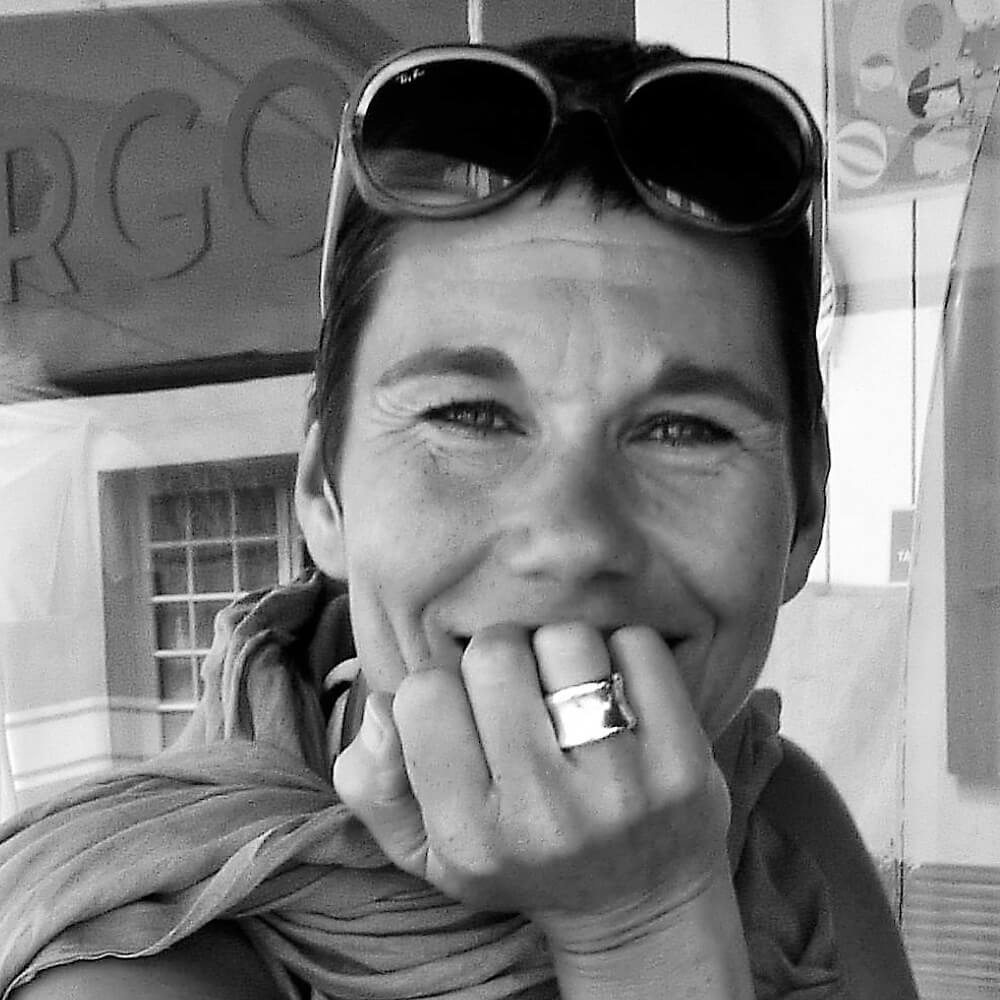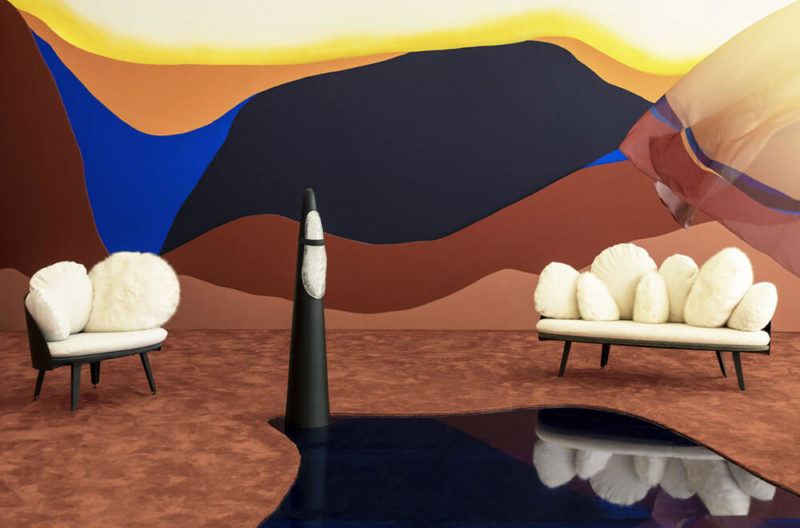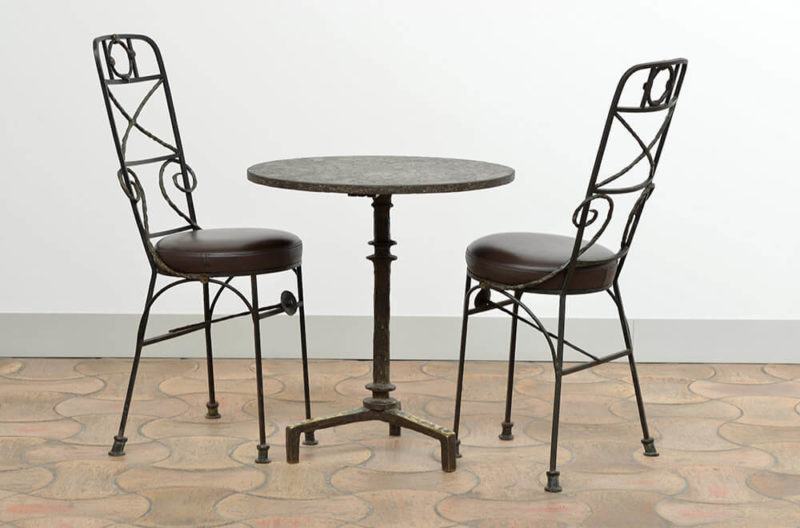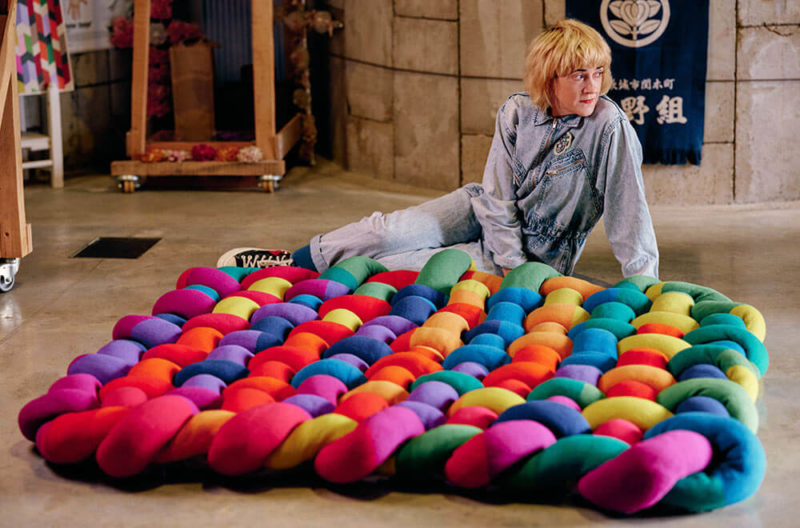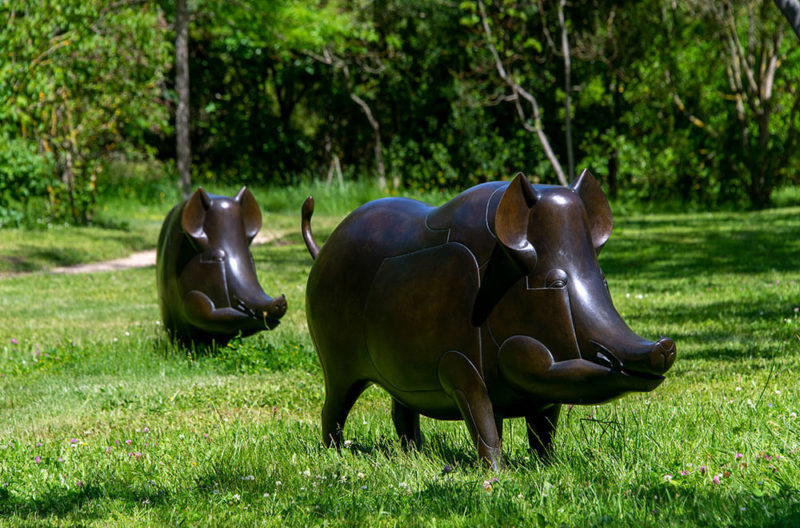GLASS to GLASS
Inventive, skilful and adventurous – new work in glass from leading contemporary designers.
Fondazione Berengo Art Space, Murano
Berengo Collection, Venice
17th July – 21st November 2021
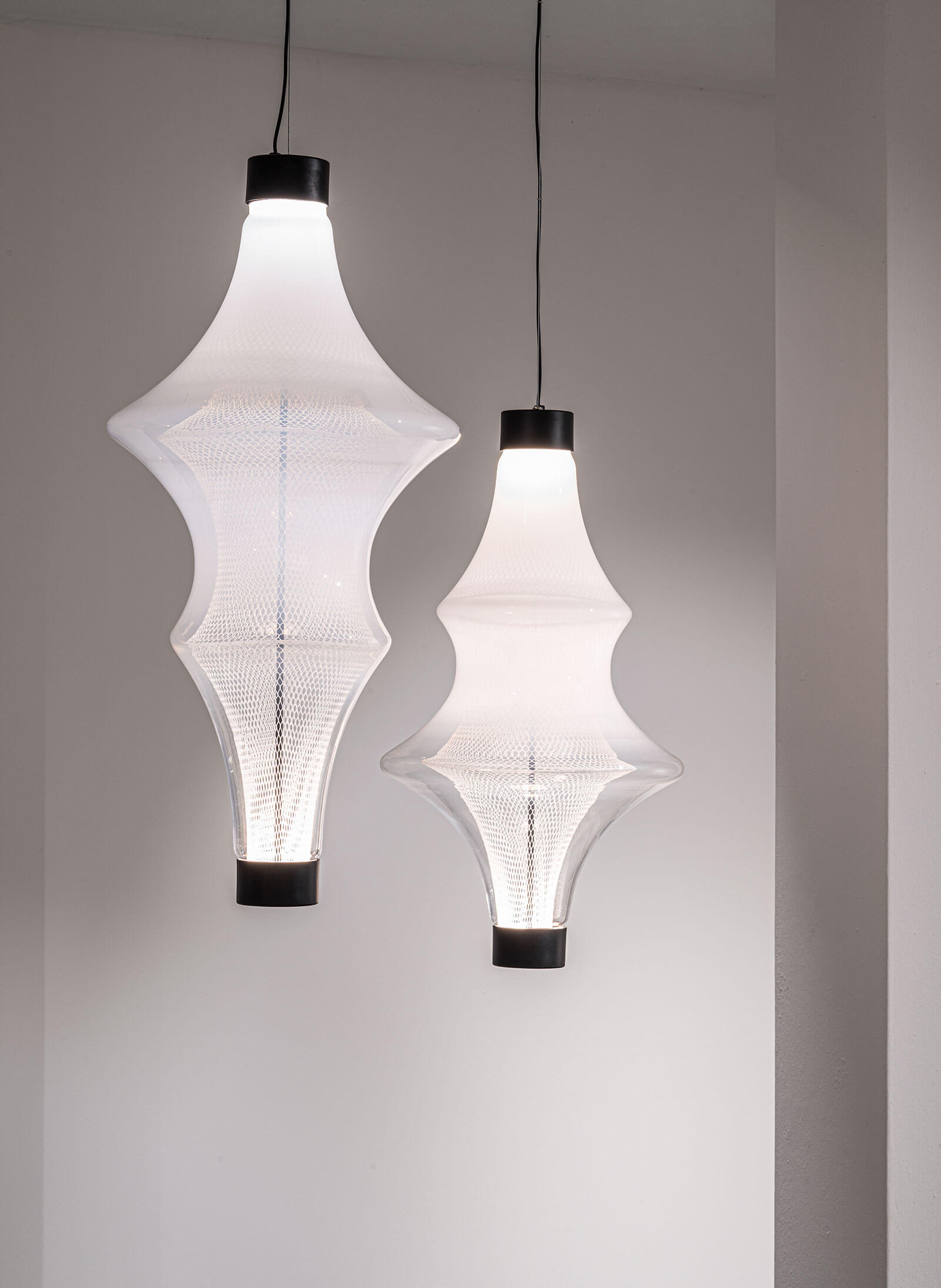
Marco Zito, ‘Nasse’, 2021
COURTESY: Marco Zito & Fondazione Berengo Art Space / COURTESY: © Leonardo Duggento
THE THEME FOR this year’s Venice Glass Week, which opens in the city on 4th September, is ‘#VivaVetro!’, or ‘#Glass Alive!’. It is a celebratory title for a celebratory festival filled with exhibitions, demonstrations and events. Chief amongst these is ‘GLASS to GLASS’, an exhibition conceived by two of Murano’s leading glass ateliers, WonderGlass and Berengo Studio.
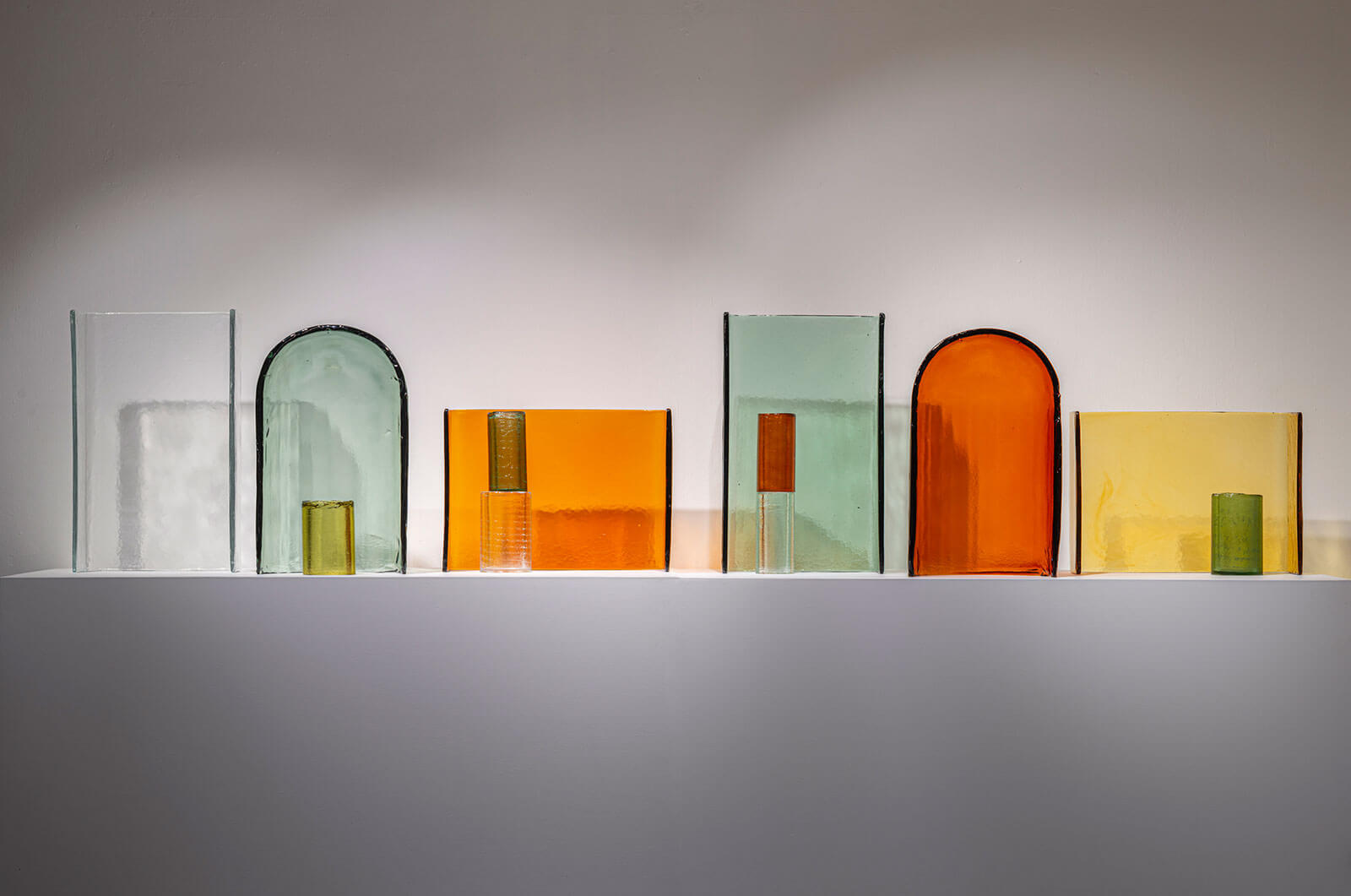
Ronan and Erwan Bouroullec, ‘Alcova’, 2021
COURTESY: Ronan and Erwan Bouroullect & Fondazione Berengo Art Space / COURTESY: © Leonardo Duggento
Featuring works designed by the likes of Maarten Baas, India Mahdavi, Bethan Laura Wood and Ronan and Erwan Bouroullec, the show is intended, says Adriano Berengo, founder of Berengo Studio “to demonstrate how organisations such as ours in Murano are interrogating traditional notions of what glass as a material can do.”
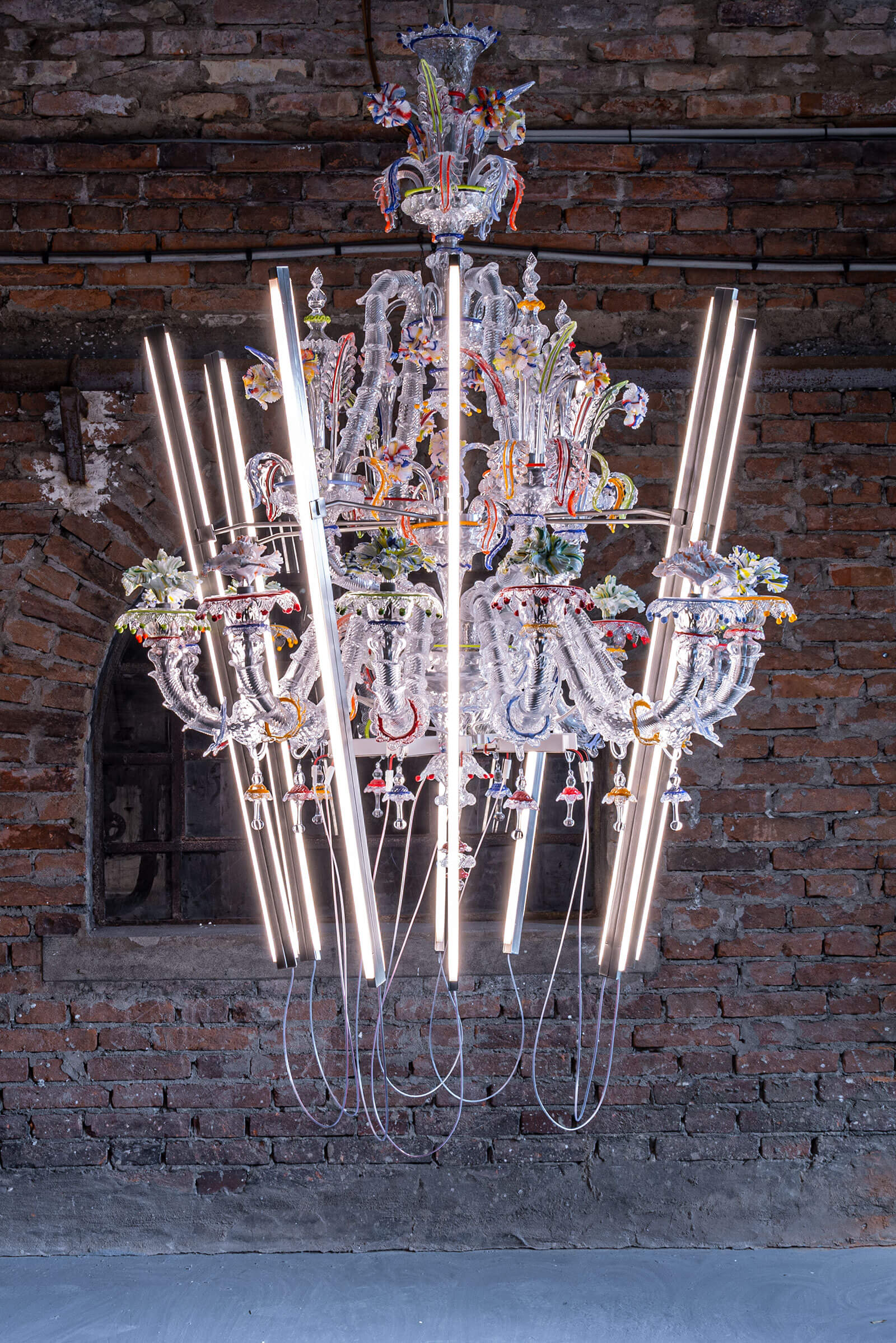
Andrea Anastasio, ‘9 to 5’, 2021
COURTESY: Andrea Anastasio & Fondazione Berengo Art Space / COURTESY: © Leonardo Duggento
And it does, triumphantly so. A significant number of the pieces here are new and, since WonderGlass is known for its collaborations with designers and Berengo Studio for its work with contemporary artists, many sit on that compelling border between the twin disciplines of art and design.
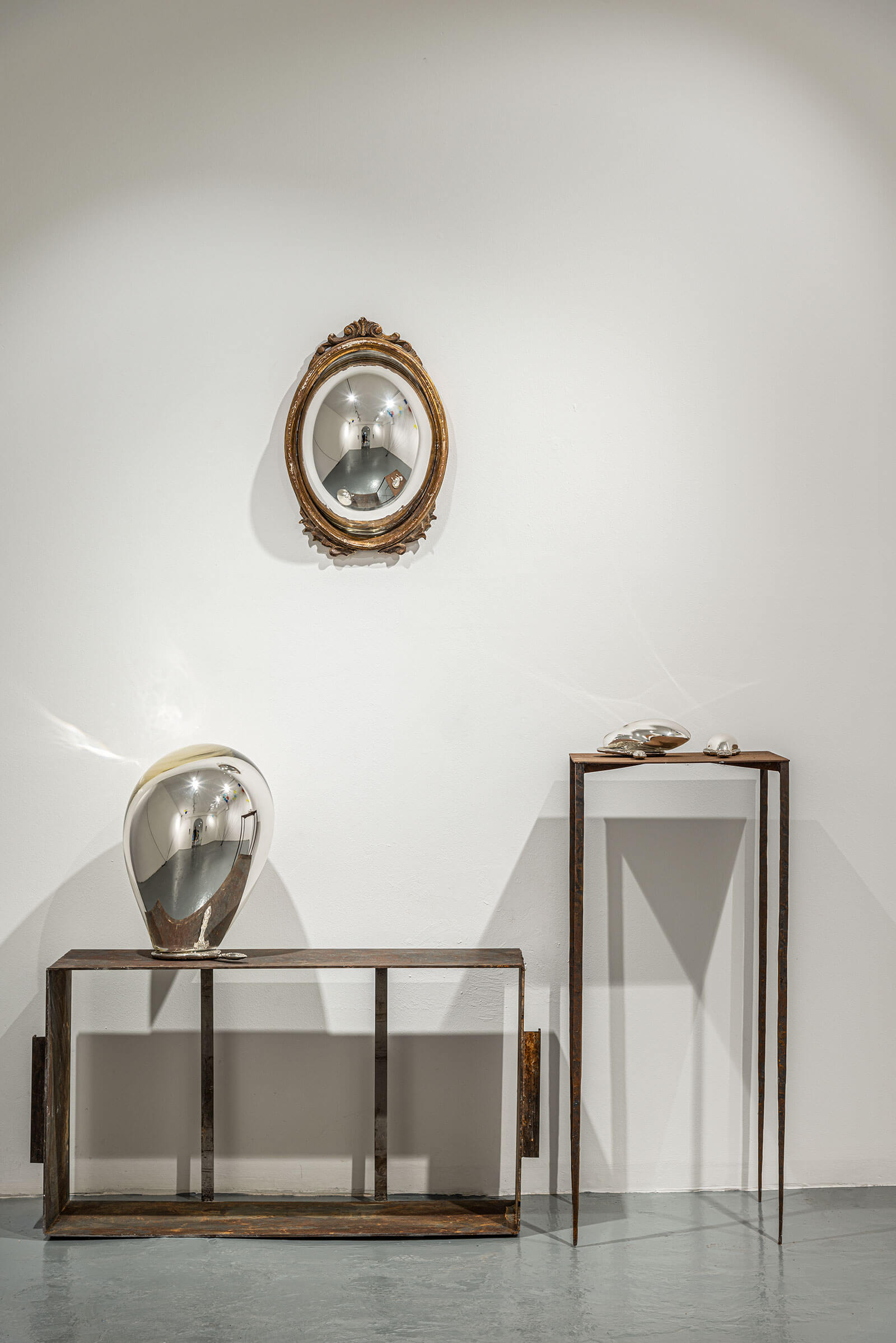
Maarten Baas, ‘MAKING UP’, 2021
COURTESY: Maarten Baas & Fondazione Berengo Art Space / COURTESY: © Leonardo Duggento
British architect John Pawson, for example, has created a series of ‘Berg Tables’ in which every detail is drawn from the visual and tactile qualities of cast glass, resulting in functional furniture that plays with notions of solidity and abstraction.
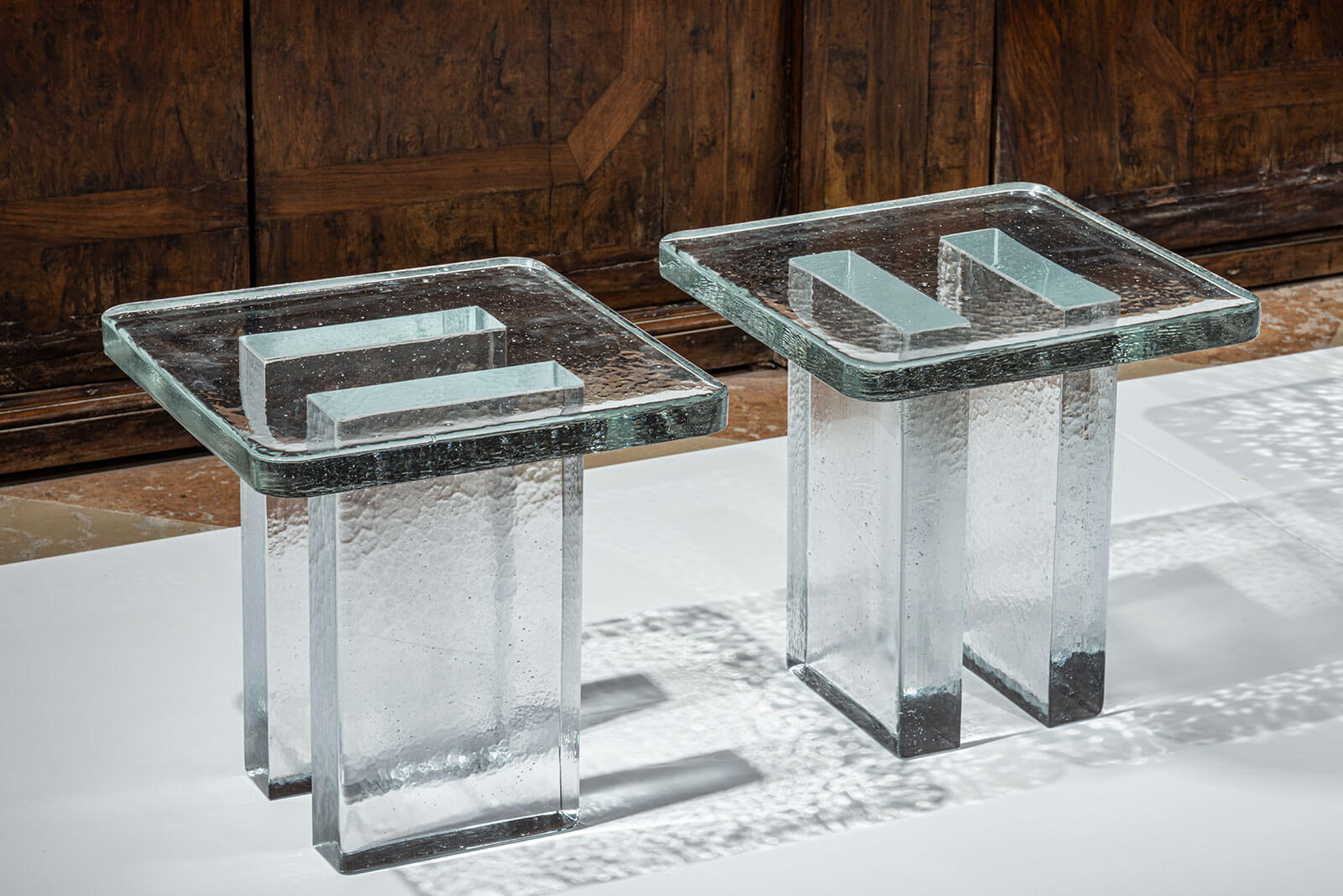
John Pawson, ‘Berg Side Tables’, 2021
COURTESY: John Pawson & Fondazione Berengo Art Space / COURTESY: © Leonardo Duggento
The Italian designer-philosopher Andrea Anastasio has re-invented the classic Murano chandelier for the 21st century with his show-stopping light sculpture‘9 to 5’; architect Marco Zito has combined the fishing nets that are still used in Venice’s lagoon with hand blown glass to create an exquisite collection of intricately-shaped luminous objects called ‘Nasse’, while Japanese design firm nendo has pushed the boundaries of what is technically possible with the ‘Melt’ collection of furniture and lighting.
“Oki Sato [founder of nendo] was inspired by watching the craftspeople in our workshop working with molten glass,” explains WonderGlass’s co-founder Maurizio Mussati, “and he wanted to allow the material to direct the design process. The main idea was to let the glass flow using only gravity and the weight of the glass itself. We came up with a method of laying hot glass sheets over steel pipes suspended between steel bars to allow the natural drape of the material to reveal its form.”
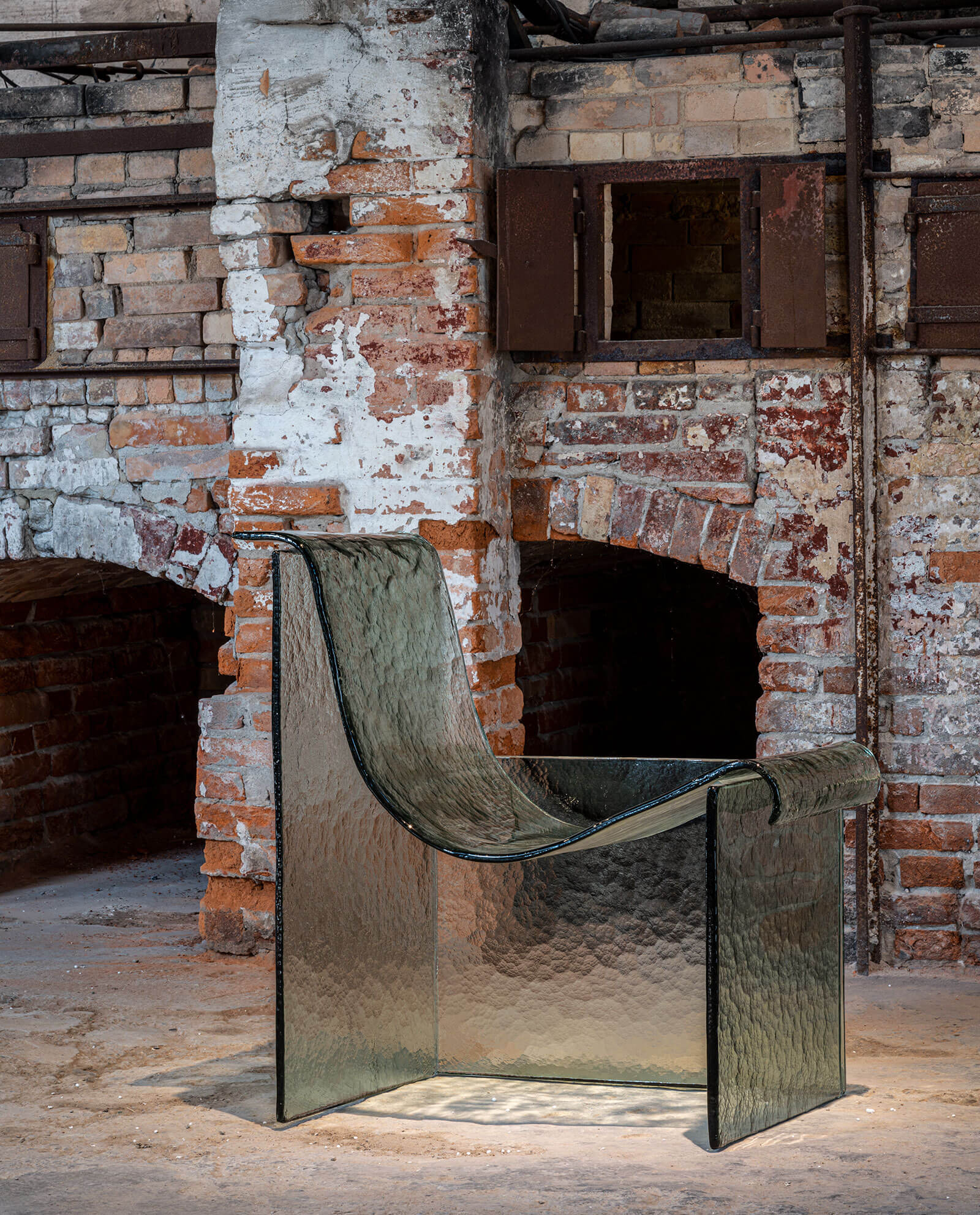
nendo, ‘Melt Chaise Longue (green)’, 2021
COURTESY: nendo & Fondazione Berengo Art Space / COURTESY: © Leonardo Duggento
“The main idea was to let the glass flow using only gravity and the weight of the glass itself …”
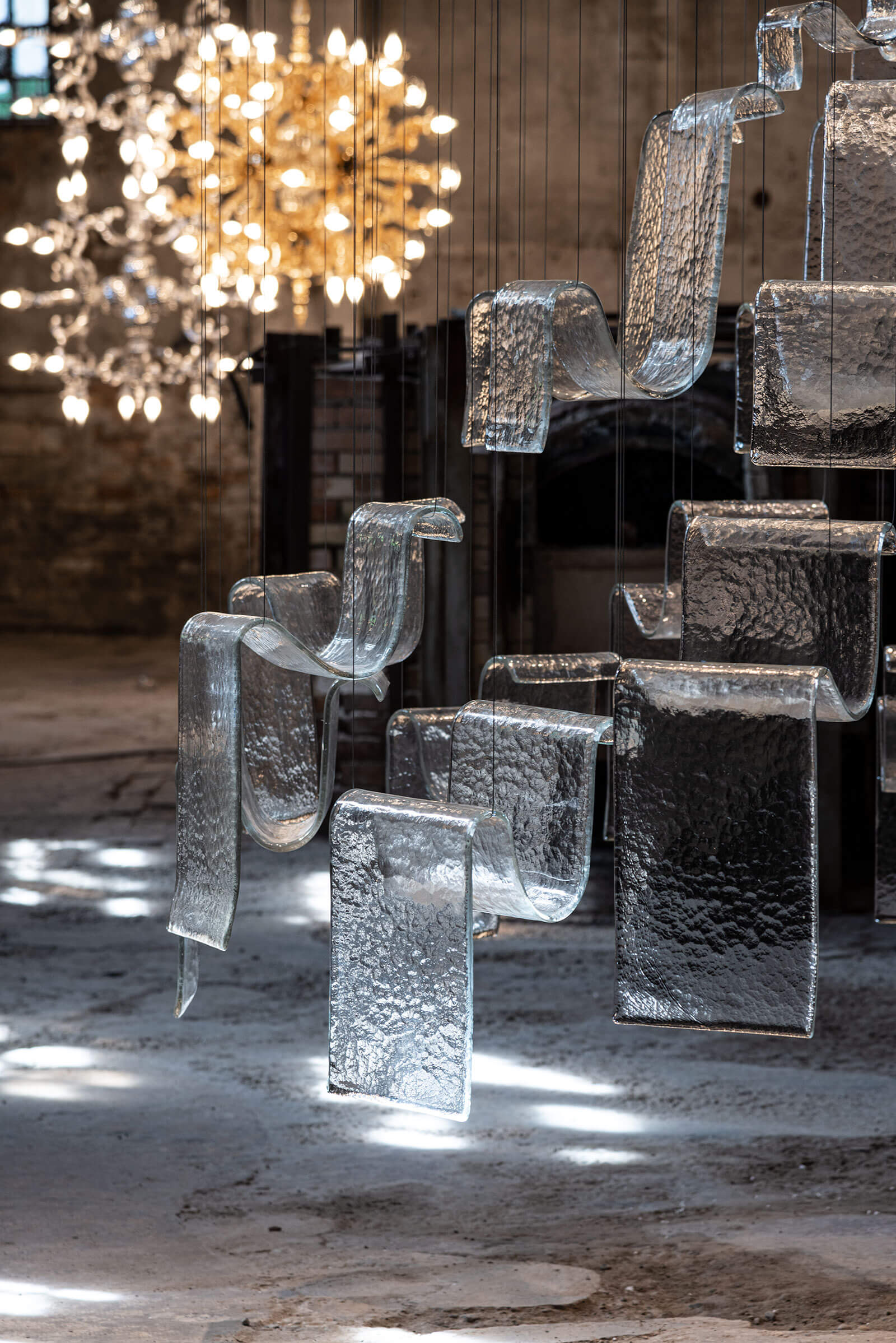
nendo, ‘Melt Chandelier’, 2021 (detail)
COURTESY: nendo & Fondazione Berengo Art Space / COURTESY: © Leonardo Duggento
” … Laying hot glass sheets over steel pipes suspended between steel bars, allowed the natural drape of the material to reveal its form.”
Two of the exhibition’s most surprising works not only demonstrate the new kind of thinking informing contemporary glass, but turn glass art into a multimedia event. ‘Echoes’ is an illuminated sound sculpture by London-based studiopluz inspired by the origins of the universe. Comprised of a series of hand blown glass discs fused with sound, it produces a stimulating soundscape that evokes the gravitational waves coming from black holes. Dimmable LEDs add another layer of sensory stimulation.
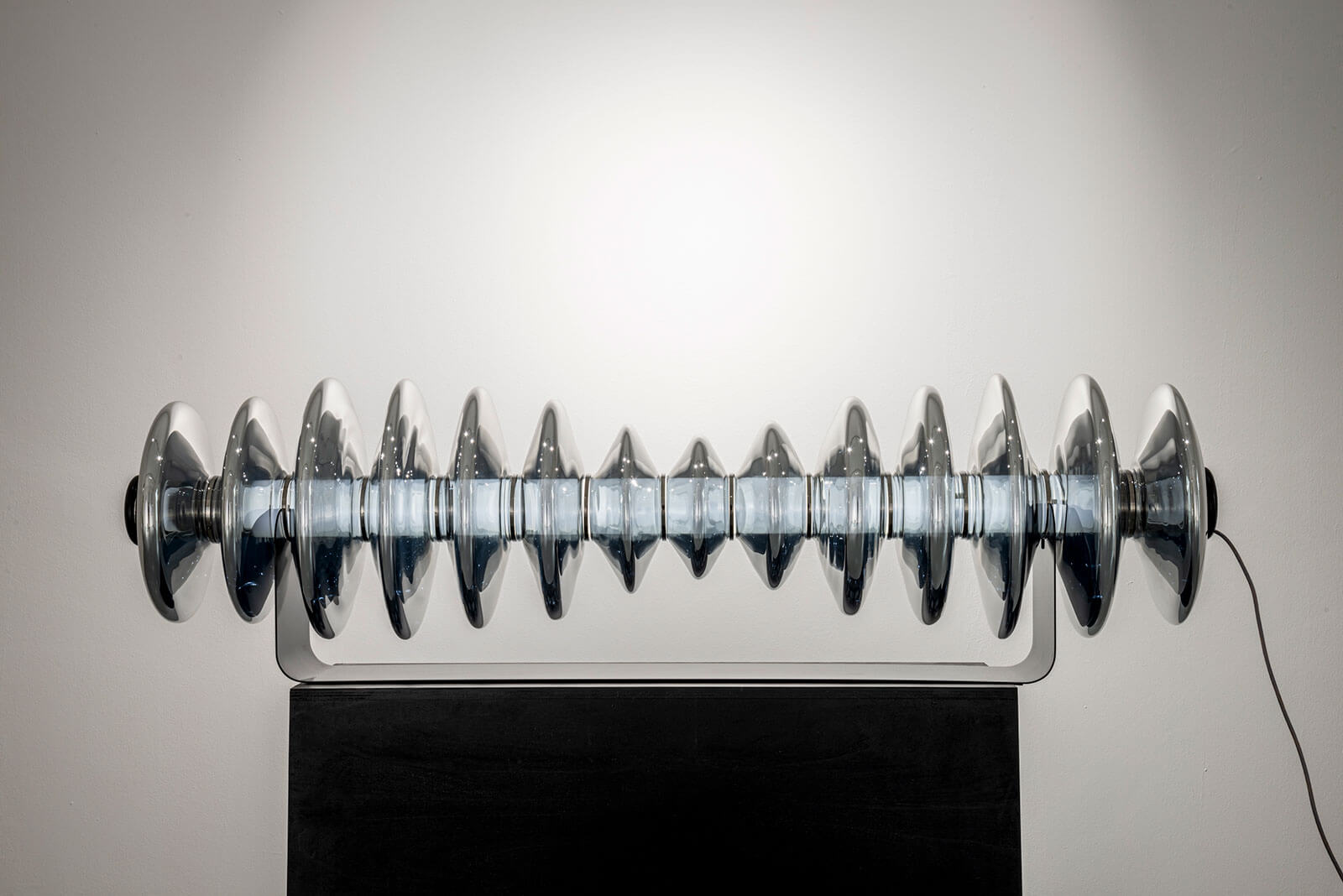
studiopluz, ‘Echoes’, 2021
COURTESY: studiopluz & Fondazione Berengo Art Space / COURTESY: © Leonardo Duggento
At first sight, Krista Kim’s ‘Mars Polyhedron’ seems to be no more than a rather beautiful collection of reflective table-top sculptures. However, these physical objects are part of this Toronto-based artist’s wider exploration of digital consciousness, and are a real-world manifestation of the furniture she designed for her digital home, ‘Mars House’. ‘Mars House’ was sold earlier this year on the NFT (non-fungible token) marketplace SuperRare for over half a million dollars, but the video is also on display here and, for Berengo, the pairing is a highlight of the exhibition. “Seeing the video of Mars House, viewing the virtual space, then witnessing the furniture from the digital design come to life in glass is a really special and unexpected experience,” he explains.
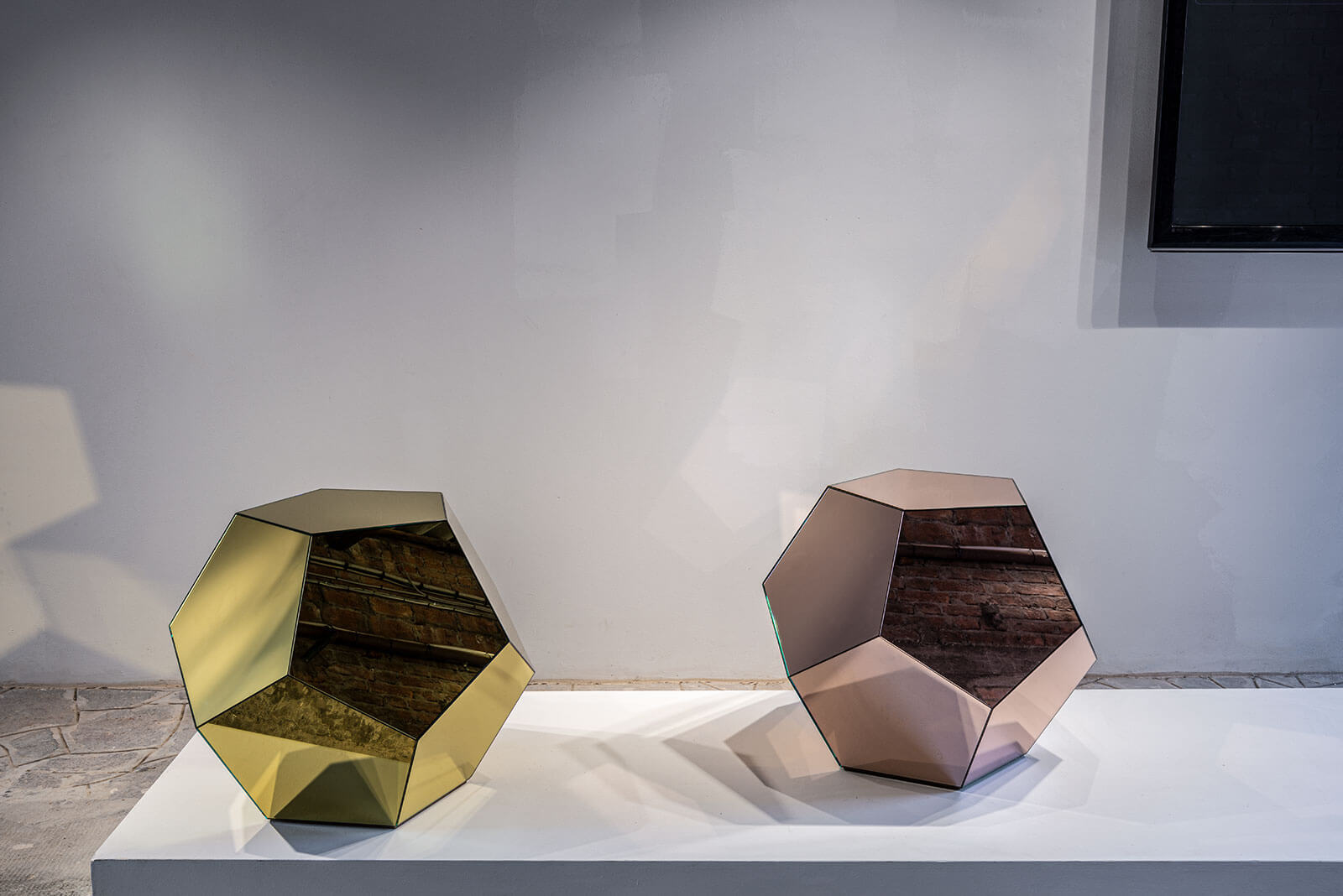
Krista Kim, ‘Mars Polyhedron’, 2021
COURTESY: Krista Kim & Fondazione Berengo Art Space / COURTESY: © Leonardo Duggento
‘GLASS to GLASS’ is a physical exhibition, and its setting, in two separate locations, is an important part of the experience. In San Marco, an early 18th century pharmacy provides an atmospheric backdrop for several of the sculptures, while the majority of work can be found across the lagoon on the island of Murano in the vast old furnace of the Fondazione Berengo Art Space.
![Nao Tamura, 'Flow [T]', 2021; John Pawson, 'Berge' coffee table and side table, 2021 COURTESY: Nao Tamura, John Pawson & Fondazione Berengo Art Space / COURTESY: © Leonardo Duggento](https://thedesignedit.com/wp-content/uploads/2021/08/wonderglass-2021-9.jpg)
Exhibition view at the Berengo Collection, San Marco: Nao Tamura, ‘Flow [T]’, 2021; John Pawson, ‘Berge’ coffee table and side table, 2021
COURTESY: Nao Tamura, John Pawson & Fondazione Berengo Art Space / COURTESY: © Leonardo Duggento
“This space really speaks to the history of Murano,” says Berengo. “Looking at the disused furnaces, you wonder how many incredible things were created here when the fires were still burning. It’s the perfect example of how the past can help inform the future.”

Exhibition view at Fondazione Berengo Art Space
COURTESY: Fondazione Berengo Art Space / COURTESY: © Leonardo Duggento
Mussati agrees. “I have always felt that the experience of an exhibition is, first of all, emotional rather than intellectual,” he says, “and the old furnaces offer this ‘wow’ effect. They speak of a glass culture and tradition that has survived and thrived because it is at once old and new, of the past, in the present and for the future.”
VivaVetro indeed!
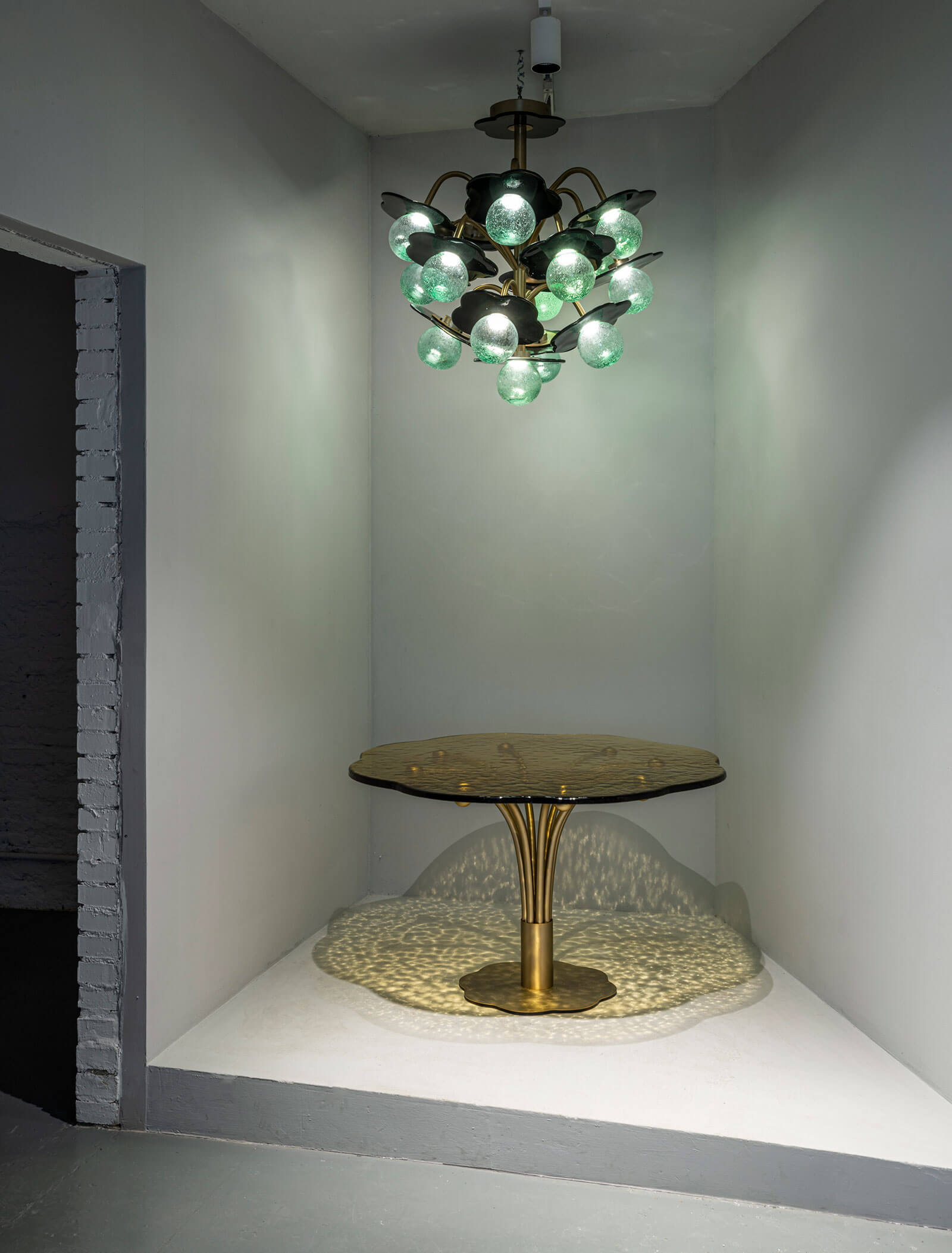
India Mahdavi, ‘Clover Chandelier and Pistil’, 2021
COURTESY: India Mahdavi & Fondazione Berengo Art Space / COURTESY: © Leonardo Duggento
